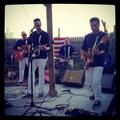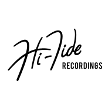Pardon me if this was posted before i can't find it in a search.
heres some things i read i don't know if all of it is true but.
A Brief History of Instrumental Surf Music
What IS “surf music”? You hear it all around you but may not recognize the elements of the style that define instrumental surf rock music. This article will clue you in, and prepare you to enjoy the surf sounds.
The First Wave
Surf music is an early form of instrumental rock and roll, with its initial rise and fall (often called the “First Wave”) occurring between 1956 and 1964. Why 1956? Elvis Presley made his first appearance on the national scene that year, and this is usually dubbed the beginning of rock and roll. This new music was a fusion of “white” folk, hillbilly, and country music with elements from “black” music styles such as the blues, early rhythm and blues, and so-called “race” music. Elvis personified this fusion, after which black AND white musicians continued down a path to create “rock and roll” (a term in black culture signifying sex).
Stylistic Features
Certain stylistic features are common in surf music, although not all these features are present in all surf music. Surf music is defined here as instrumental (no singing); dance-able and aimed at youth (like all rock ‘n roll); and usually based on a standard rock band line-up of 1 or 2 electric guitars, a bass, and drums. Additional instruments may include a saxophone, keyboard, third guitar, and maybe a trumpet. There is even a drum pattern called the “surf beat” that is very common in surf and rock tunes, with the accent on beats 2 and 4.
A number of guitar techniques have become commonly used in surf music, and are said to simulate the feel and sounds of surfing. These techniques include fast double-picking (like rushing water), often concurrent with a glissando (sliding the fingers down the fret board) – sounds like being inside the curl of a wave; a “wet” reverb sound, usually supplied by a reverb effect built into a guitar amplifier or a stand-alone reverb tank (this is kind of an echo effect – sounds like being under water); and liberal use of the “whammy” bar, which bends the pitch being played (gives a sense of wave-like movement to the pitch).
What about The Beach Boys - didn’t they play surf music? OK – this is sore point with many instrumental surf musicians. Usually when you read about surf music (there has actually been very little written about this genre), there is a cursory mention of Dick Dale (more about him later), and then The Beach Boys are discussed ad nauseum. Not that there is anything wrong with The Beach Boys but they - you know - SANG. They sang about surfing and the beach and girls in bikinis, etc. - this style is sometimes called “beach music” or “vocal surf music” or “California music” – it’s more akin to pop music. Some of the stylistic features mentioned above were used behind the vocals in some tunes, but The Beach Boys are not true surf music according to the definition given here.
Dick Dale
He was born Richard Monsour in Boston. He moved to California as a teen and was interested in pursuing a musical career as a country singer/guitarist (thus the moniker Dick Dale – he changed his name to sound “country”). He was an avid surfer, and an unusual self-taught guitarist, playing left-handed and upside down. He is credited with initiating many of the stylistic features of surf music, although more research needs to be done in this area. There is no question that his is a big name in early surf music, but he wasn’t the only one and he didn’t invent it single-handedly.
In the late 50s and early 60s, new guitar amplifiers were being developed for the new electric guitar styles; Leo Fender was an important name in advances in both instruments and amplifiers. Dick’s heavy and LOUD playing style was causing him to fry amps right and left, according to him. He worked with Leo Fender to develop more robust amps, such as the Fender Dual Showman, which would give him the power he wanted for performing. Fender amps and guitars are still the gear of choice for many surf bands, giving them a distinctive sound. (Leo Fender collaborated with many early rock musicians in an effort to improve his musical products.)
Initiating the creation of the ubiquitous reverb tank is also credited to Dick Dale. The story goes that Dick, who was trying to sing in the style of Elvis (he actually had a bit part as an Elvis impersonator in the 1960 Marilyn Monroe movie “Let’s Make Love”), felt less than confident about his vocal stylings. Leo Fender created a reverb unit for him to plug his microphone into, to add depth and power to his voice. One day, a clever Dick decided to plug his guitar into the unit to see what would happen and – voila! – the reverb-drenched “wet” surf guitar sound was born.
Surf music was loosely tied to surf culture - most of the young people listening to and playing surf music were surfers. In 1960-61, Dick Dale had a weekly gig at the Rendezvous Ballroom in the southern Cali town of Balboa, which attracted hundreds of surfers; one of the popular dances at the time was the Surfer’s Stomp. And then surf culture became pop culture, expanding from California throughout the country with surf tunes topping the charts (such as The Ventures “Walk Don’t Run” in 1960, The Surfaris “Wipe Out” in 1963, and The Chantays “Pipeline”, also in 1963) and surf-themed movies such as “Gidget” (1959) and “Beach Blanket Bingo” (1965) filling the theaters.
Thats all.































